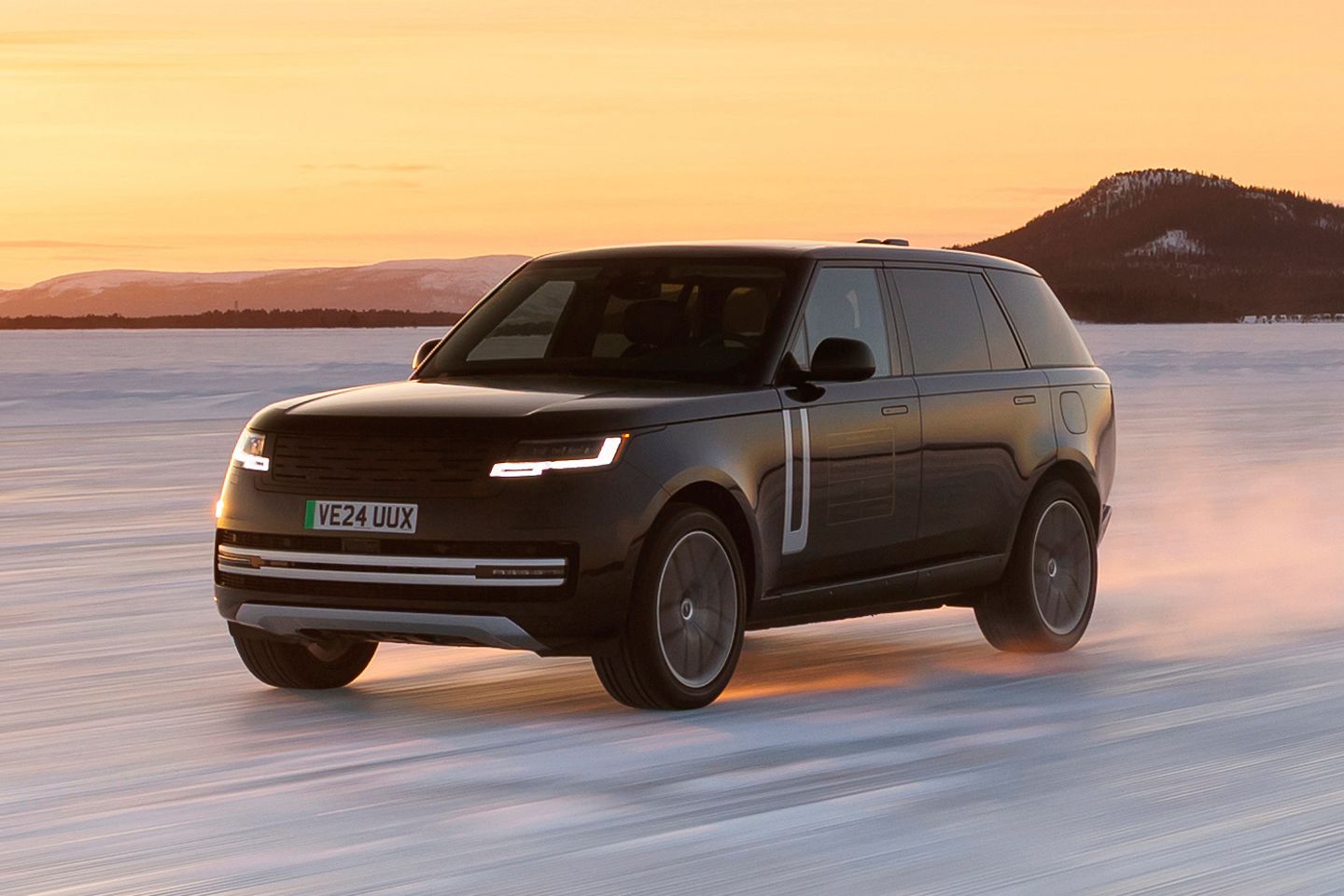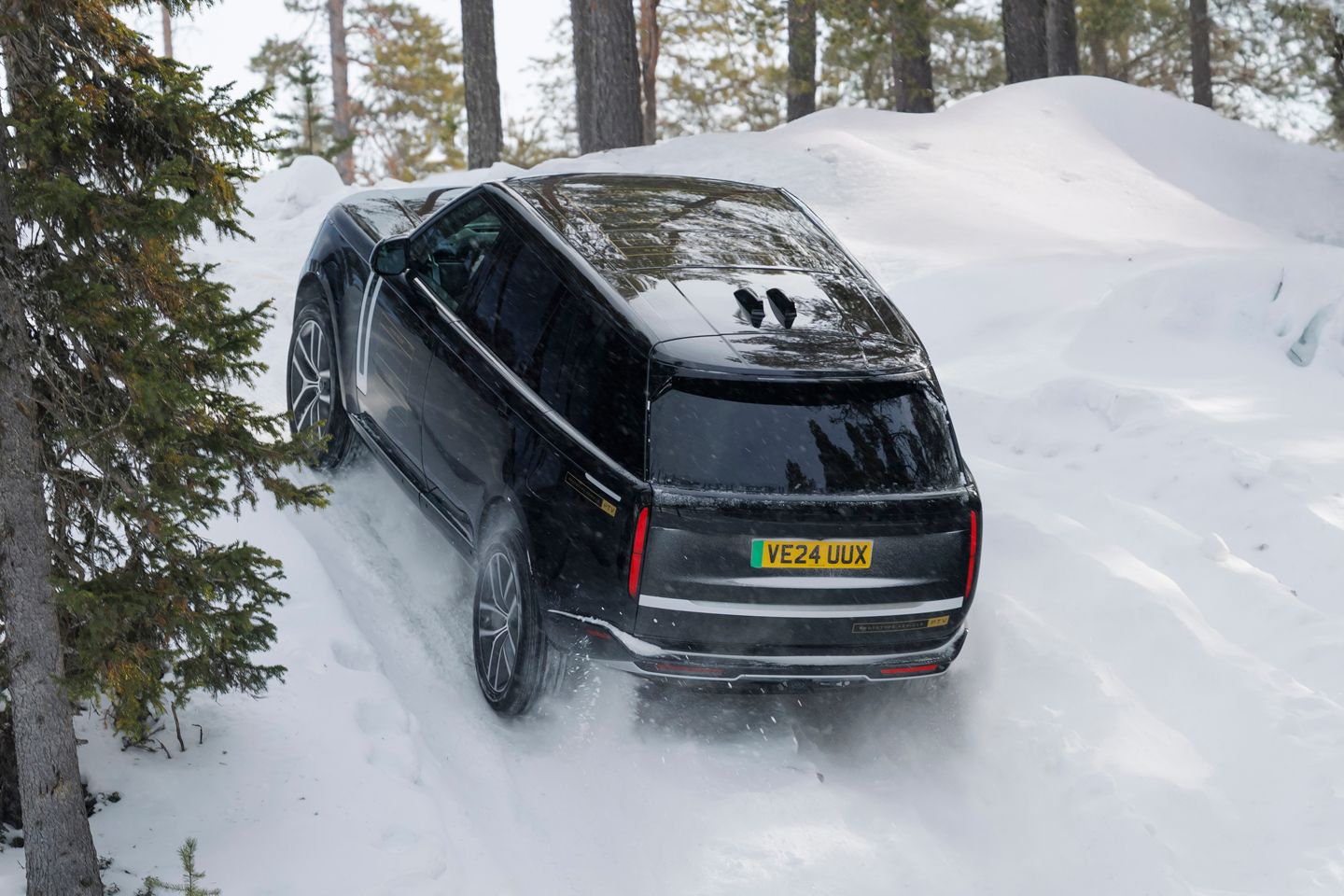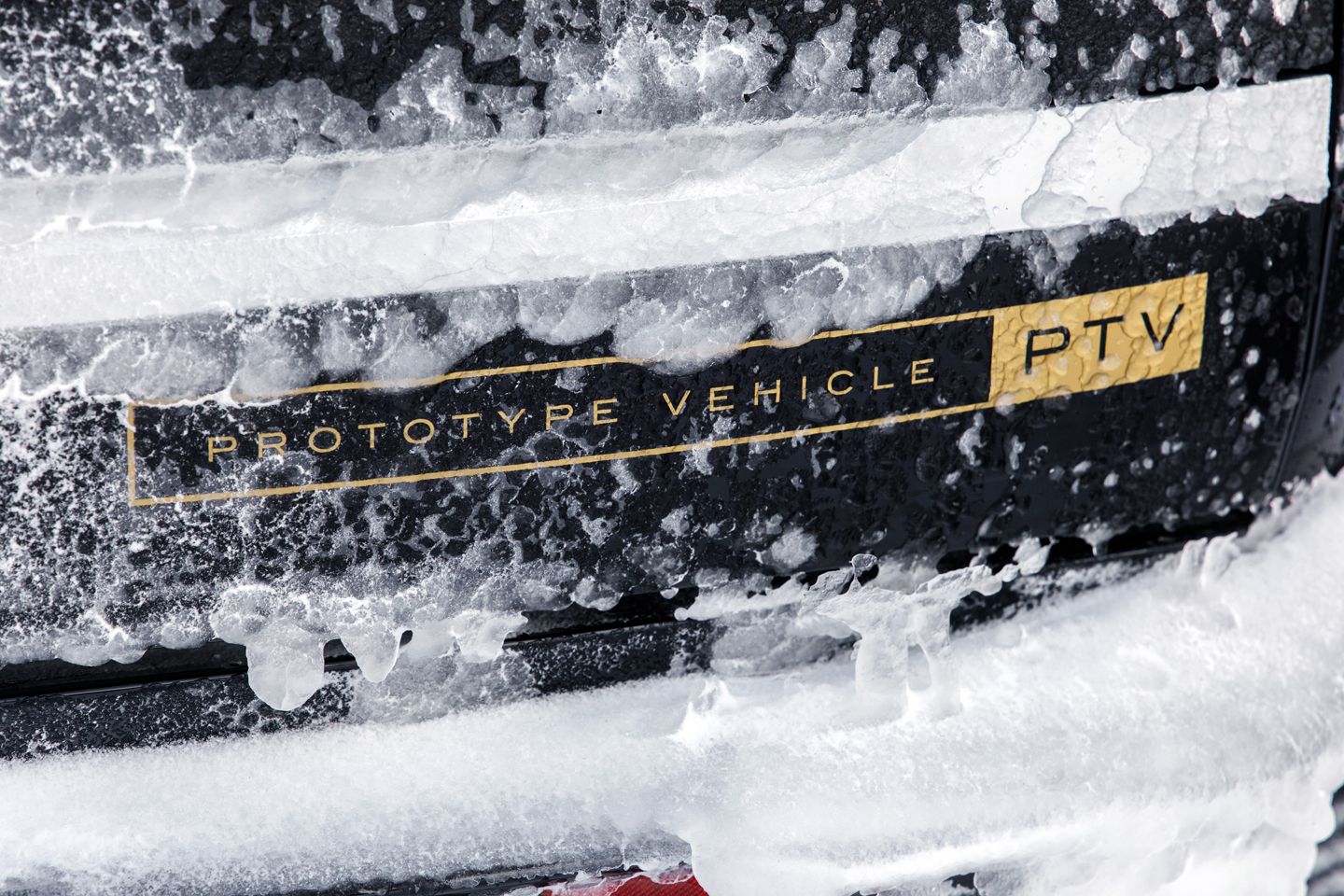
The introduction of pure electric power easily feels like a milestone as significant as any other in Range Rover history. Indeed as powertrain technology goes, it’s probably a bigger deal than diesel and hybrid engines. So nothing is being left to chance. Here’s a car that’s got to maintain the effortlessness and formidable ability of a Range Rover, a reputation that’s been established over more than 50 years, without an engine for the first time. No small challenge.
With a chunk of hot weather testing complete, now the Electric has been subjected to a second round of really chilly stuff in Arjeplog. Easily as important for an EV as baking in a desert, because customers in Northern Europe (and us during a cold snap) want to know that charging, range and interior comfort are as unaffected as possible by plummeting mercury. It’ll have an impact, of course, though plenty is being done to mitigate the effects. Those used to the all-weather supremacy of a Range wouldn’t be best pleased by a third less range in the darker months.
‘ThermAssist’ is one of the new bits of tech that’s being employed to combat those problems. It’s a thermal management system, which should reduce heating energy consumption by as much as 40 per cent (so you keep that heated wheel on if you want) as well as delivering ‘optimised’ driving range and lessening the impact of the cold when it comes to charging the JLR-designed, 800V, 117kWh battery. Down to minus 10, ThermAssist can recover heat for the cabin or the powertrain.


The tens of thousands of kilometres in Sweden have also been beneficial for finalising the driving experience. Land Rover is all too aware of the task ahead: ‘All-terrain capability and refinement are core elements of the Range Rover experience and that will continue with electric propulsion.’ So plenty of development time has been invested in the operation of one-pedal driving, apparently taking regen ‘to an advanced new level’. It’s actually going to function with Terrain Response and Hill Hold, so the Range will climb every mountain, ford every stream, stop where required and get moving again without ever touching the brakes.
Electric will of course have its advantages off-road as well when it comes to traction management; the claim is that slip can be managed up to 100 times quicker than the equivalent Range with an engine, with motor speed adjusted in 50 milliseconds. Torque that goes rearwards is fully variable from 100 per cent to none at all depending on the traction requirements. Additionally, the air suspension has been calibrated to ensure the Electric ‘retains authentic Range Rover composure in all conditions’. In theory, the silence of battery power ought to be the perfect match for a supremely refined luxury car – not long now until we find out.
Matt Becker said: “In its driving character, Range Rover should seamlessly combine capability and refinement. Delivering both in an electric vehicle in a way that doesn’t diminish the vehicle in other areas is incredibly challenging. By increasing its torsional stiffness and improving its responses, we’ve been able to maintain a customary Range Rover driving experience that feels familiar. We have delivered on this promise by marrying all the essential Range Rover elements with new and advanced technologies.” Pre-orders will open later this year…

